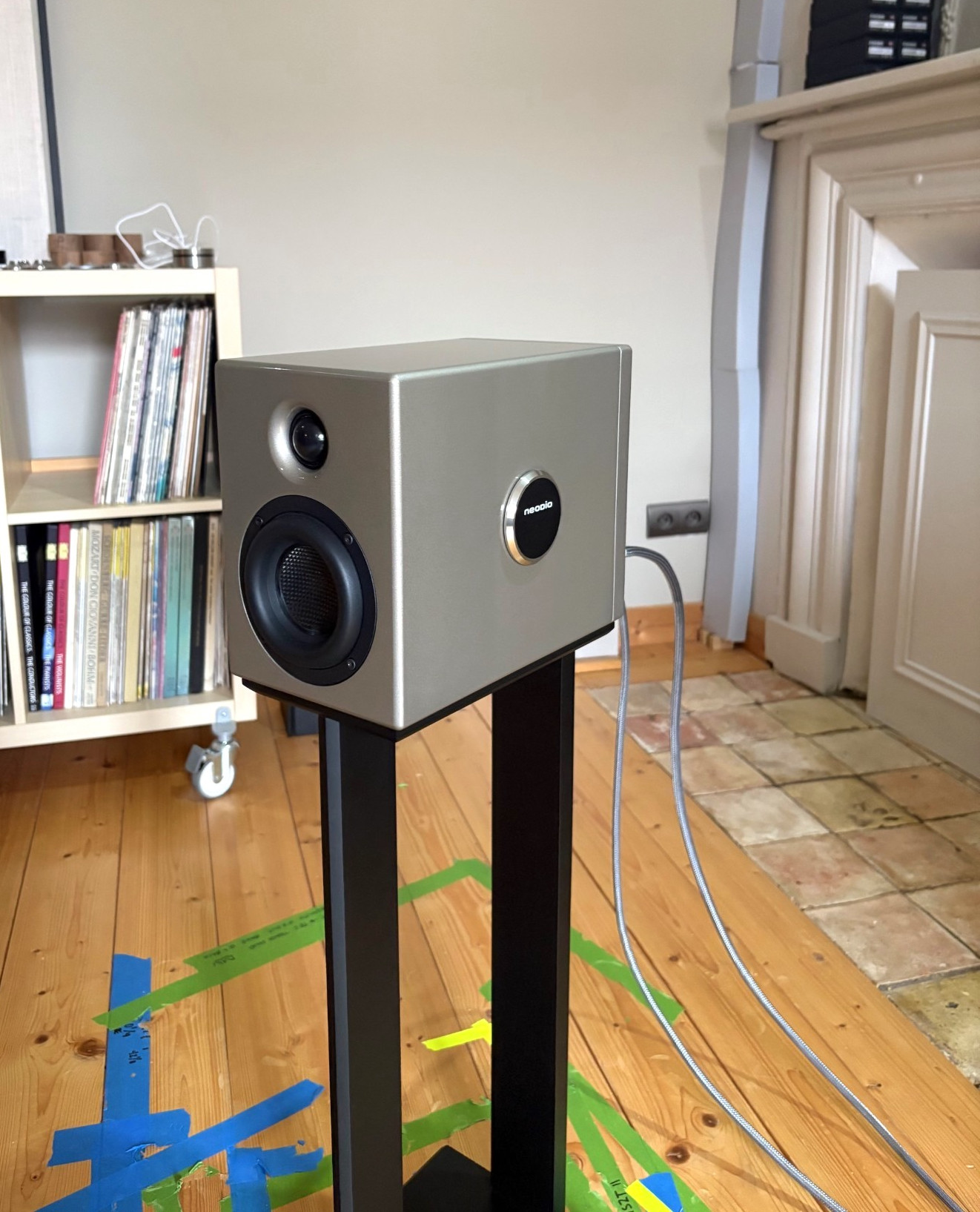For once, the photographs are fully representative of reality. The Lilli really is as small as it looks in the pictures. Imagine something slightly smaller than an LS3/5A, tipped on its side and with drivers mounted in its base and you’ll not be far off the mark. Mind you, the paint-finish and profiled edges make this a far classier looking little box than the BBC design ever managed. Set up in my case was classically simple: an equilateral triangle with the speakers heavily toed in, with their listening axis to pass in front of the listener. I ran the speaker well away from boundaries, although Neodio insists that it is comfortable with as little as 10cm between it and a rear wall – although you can expect some flattening of the image if you go that route.
My earlier reference to the LS3/5A is far from coincidental. The Lilli offers the same sensitivity from roughly the same internal volume. But it also claims to generate considerably greater bandwidth. No LS3/5A has ever even flirted with 50Hz – one of the reasons that I’ve never taken it seriously as a speaker for reproducing music. So, increasing the bandwidth of such a small box to achieve the practical minimum for musically satisfying performance is a laudable goal – but also a serious cause for concern. In the past, such attempts have produced speakers with cripplingly difficult impedance characteristics and constipated rhythmic and dynamic capabilities: students of the 1980’s small speaker/big amps arms race take note.

With these things in mind, I drove the Lillis with the price and power appropriate Heed Lagrange, a combination that proved both extremely revealing (of the speakers’ nature) and enjoyably listenable. The resulting bass was neither truncated nor inarticulate. Instead, it was both beautifully modulated and pitch distinct. Lilly might not plumb the depths and generate the generous acoustic development and dimensionality that goes with really deep bass, but she brings weight and complexity to piano, body and texture to cello. Nor is that bottom-end processed or congealed. Whether it’s Anastasia Kobekina’s verve and attack, or Víkingur Ólafsson’s sensitivity, pacing and placement, the Lillis capture the sense and purpose in the performance. Upright bass notes (on Cannonball Adderley’s Somethin’ Else) were perfectly paced, spaced and pitch perfect, even at low levels. With enough weight, in the right place and at the right time, the speakers captured phrasing and musical momentum with an easy, fluid grace that breathed life into the performers and expressive range into the performance.
It’s an astonishingly lucid and engaging low-frequency performance (especially given the size of the box and low system sensitivity) that manages to underpin all the precision and transparency that’s so often associated with the best mini-monitors, adding pace, rhythm and timing to the mix. It suggests not only a driver with exceptional behaviour and control, but an exacting match between that driver, the enclosed air volume and the port. When I asked Stéphane Even how long it had taken to achieve the Lilli’s balanced performance, he simply rolled his eyes in a “You have no idea…” sort of way. Thinking back, I can remember just how long ago he first mentioned the project to me – a period measured in years, not months. In practice, it’s surprising just how quickly the ear adapts to the limited bandwidth available from these tiny speakers, not least because that bandwidth is all genuinely useful, actively contributing to the musical experience in the way that the slow, non-linear, disjointed and flubby low frequencies that emerge from so many affordable floor-standers don’t. The open mid-band and easy separation that results makes for an engaging immediacy and directness, whether it’s Nanci Griffith’s distinctive vocals and the drum tight backing and familiarity of her band, or Neil Young’s nasal delivery at Massey Hall. The distinctive character and nature of each voice, the singer’s approach and technique is effortlessly, naturally apparent.

